ART AMSTERDAM 2010
26 may - 30 may 2010
This is the first time that Gallery Soledad Senlle (2007) takes part in Art Amsterdam. Soledad Senlle proudly presents new work by Greg Streak (1971, Zimbabwe) and Doina Kraal (1980, Nederland). By showing these artists jointly, Marisol Ferradás, underlines the power of multidisciplinarity in art. Both Streak and Kraal work with different media, from film and photography to found footage and drawing, and excel at combining material.
‘A rush of blood… has a corpuscular feel to it; almost like some part of the inside of the body under microscope. Reminiscent of a network of blood-filled veins or a tap root system out of control, … A rush of blood is both manic and delicate.’ – Greg Streak
Streak is an artist who works with the realms of material and space, both physical as well as psychological. His cool aesthetic, even minimalist work, is characterized by formalistic concerns and a preoccupation with the materiality of substance. The titles of the works are critical in Streak’s case; they give meaning to much of what would otherwise be obsessive abstraction.
Streak has a sharply critical and eclectic eye. One of the more prolific artists of his generation, he has focused on both his individual pursuits as well as orchestrating large scale projects that he has both conceptualized and curated, from Tokyo to Sao Paolo and Indonesia. He lives and works both in South Africa and The Netherlands. The origin of his relation with The Netherlands lies with his residency at the Rijksakademie van beeldende kunsten.
'The past inspires. Landscapes and buildings tell stories, stories are fairytales, fairytales are collections of secrets, dreams and histories. You can pull them apart. Art pieces are like small doors that open into another world.' – Doina Kraal
Kraal also creates new worlds with her art. She does so in a poetic and mysterious way and delicately stimulates the viewer’s narrative imagination, which juxtaposes intriguingly with Streaks abstraction. The artist creates installations, for which she uses projections, photography and sculptures. These are illusionary landscapes, referring to landscapepainting, without using the craft of painting. She uses found footage; photographs made by her grandparents and great-grandparents. After a careful selection, she extracts elements thereof and places them in another context. They appear as ‘extras’ seemingly walking out of the image. By recreating compositions, Doina Kraal creates worlds that never were, but could have been.
Doina Kraal lives and Works in Amsterdam. She studied at the Gerrit Rietveld Academie in Amsterdam and received a master in Fine Art from Central Saint Martin’s College of Art and Design in London. Her work has been shown from New York to Johannesburg.
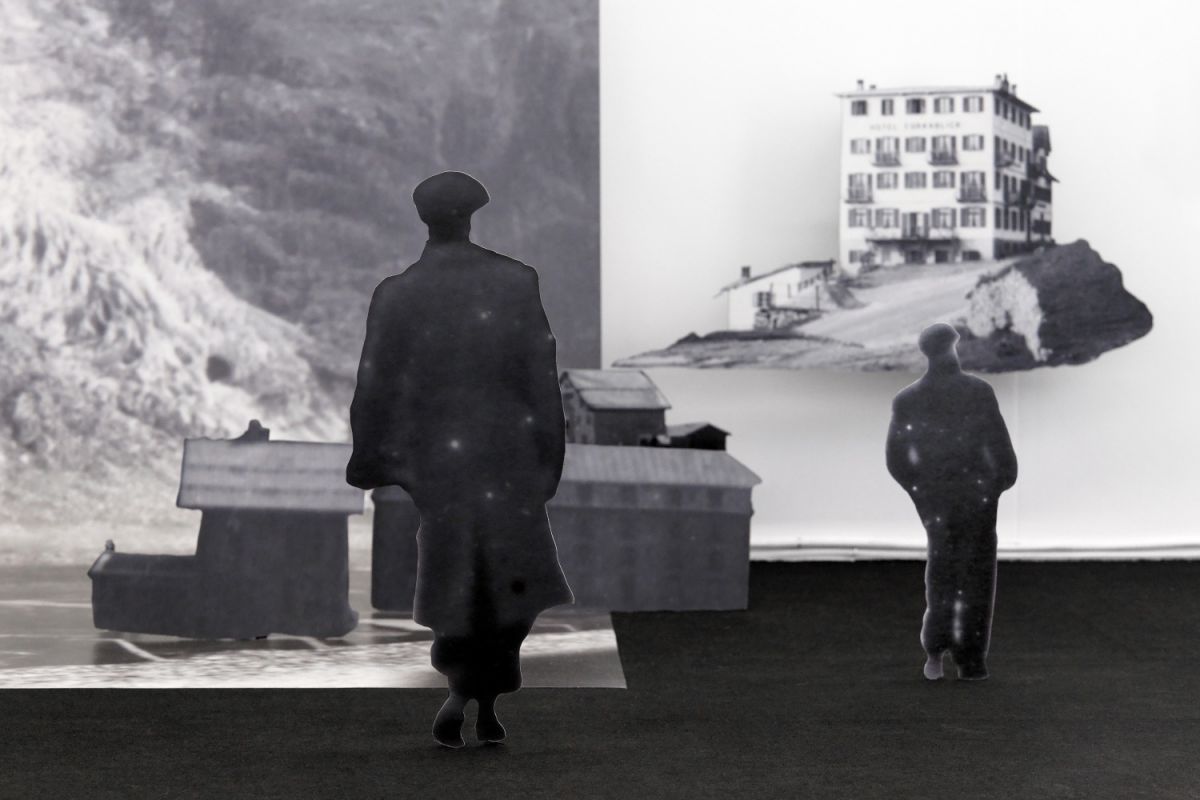
Doina Kraal (NL) Furkablick & Groen Blauw Landschap, 2010
Inkjet and c prints on forex and polystyrene,
Rai, Amsterdam
Kraal creates new worlds with her art. She does so in a poetic and mysterious way and delicately stimulates the viewer’s narrative imagination. The artist creates installations, for which she uses projections, photography and sculptures. These are illusionary landscapes, referring to landscape painting, without using the craft of painting. She uses found footage; photographs made by her grandparents and great-grandparents. After a careful selection, she extracts elements thereof and places them in another context. They appear as ‘extras’ seemingly walking out of the image. By recreating compositions, Doina Kraal creates worlds that never were, but could have been.
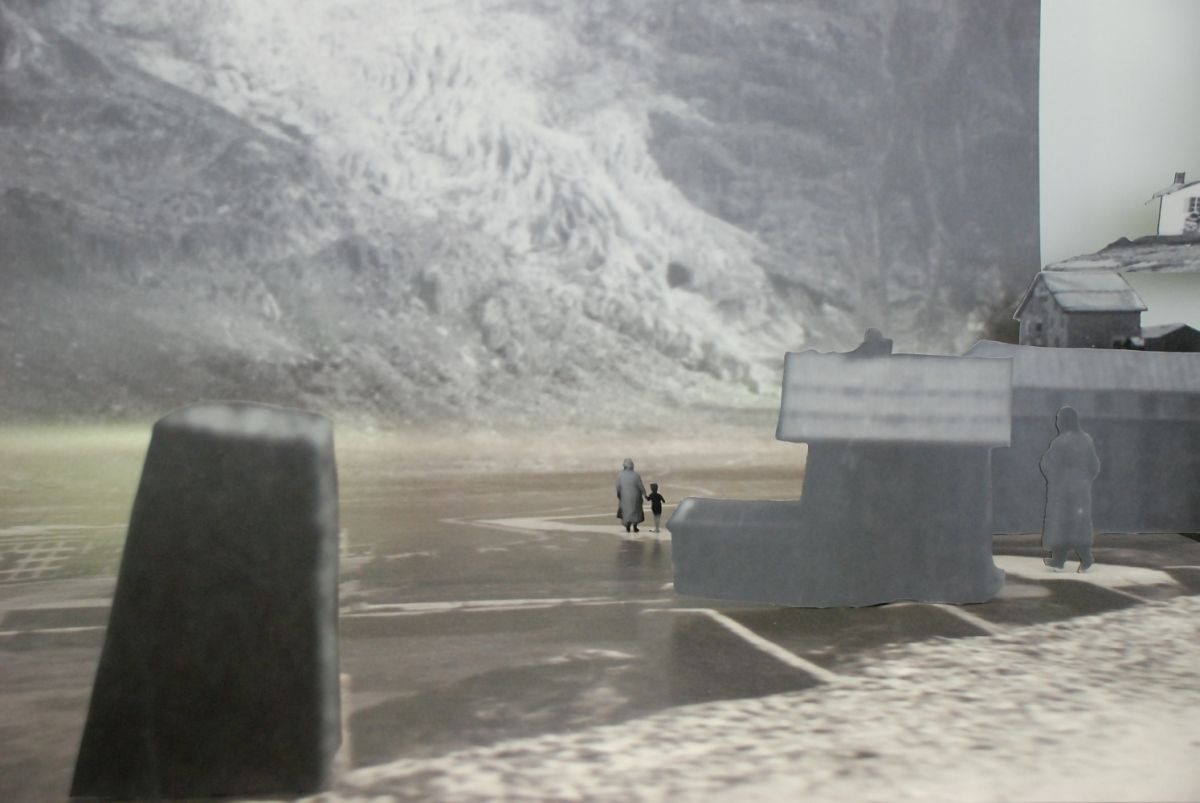
Doina Kraal (NL) Furkablick & Groen Blauw Landschap, 2010
Inkjet and c prints on forex and polystyrene,
Rai, Amsterdam
Kraal creates new worlds with her art. She does so in a poetic and mysterious way and delicately stimulates the viewer’s narrative imagination. The artist creates installations, for which she uses projections, photography and sculptures. These are illusionary landscapes, referring to landscape painting, without using the craft of painting. She uses found footage; photographs made by her grandparents and great-grandparents. After a careful selection, she extracts elements thereof and places them in another context. They appear as ‘extras’ seemingly walking out of the image. By recreating compositions, Doina Kraal creates worlds that never were, but could have been.
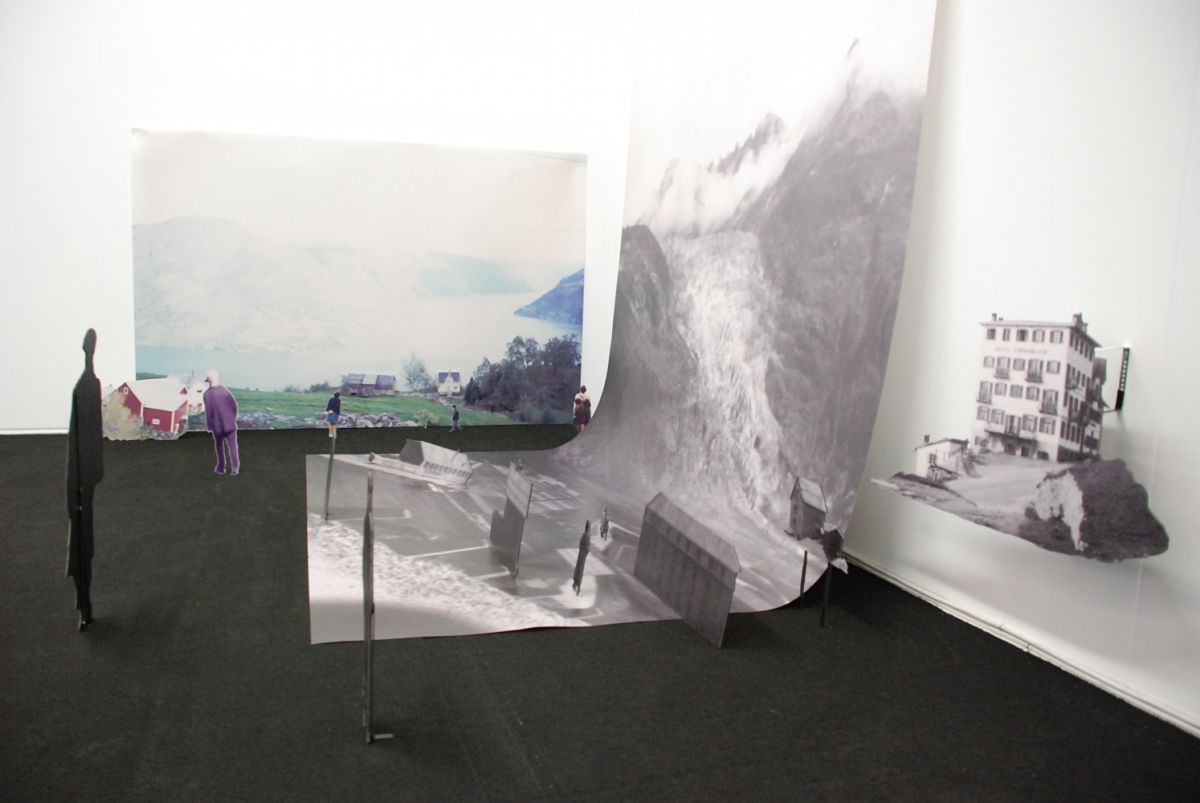
Doina Kraal (NL) Furkablick & Groen Blauw Landschap, 2010
Inkjet and c prints on forex and polystyrene,
Rai, Amsterdam
Kraal creates new worlds with her art. She does so in a poetic and mysterious way and delicately stimulates the viewer’s narrative imagination. The artist creates installations, for which she uses projections, photography and sculptures. These are illusionary landscapes, referring to landscape painting, without using the craft of painting. She uses found footage; photographs made by her grandparents and great-grandparents. After a careful selection, she extracts elements thereof and places them in another context. They appear as ‘extras’ seemingly walking out of the image. By recreating compositions, Doina Kraal creates worlds that never were, but could have been.
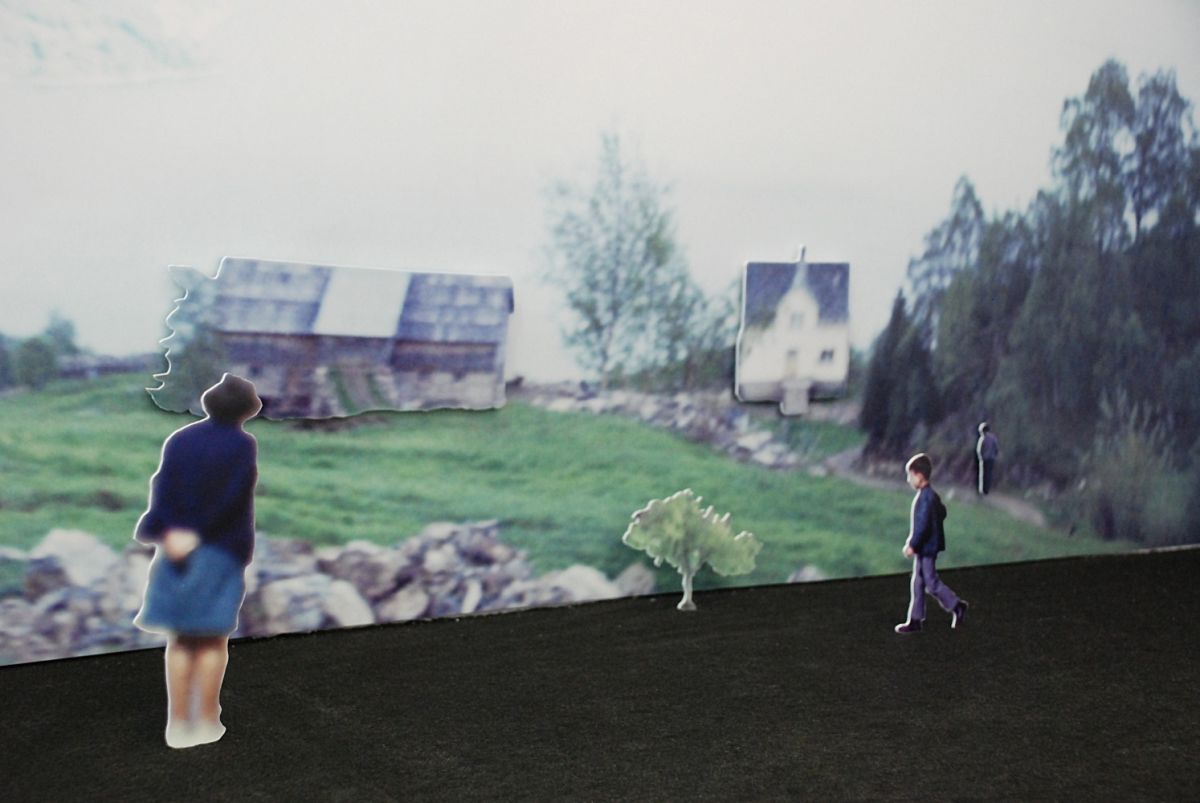
Doina Kraal (NL) Furkablick & Groen Blauw Landschap, 2010
Inkjet and c prints on forex and polystyrene,
Rai, Amsterdam
Kraal creates new worlds with her art. She does so in a poetic and mysterious way and delicately stimulates the viewer’s narrative imagination. The artist creates installations, for which she uses projections, photography and sculptures. These are illusionary landscapes, referring to landscape painting, without using the craft of painting. She uses found footage; photographs made by her grandparents and great-grandparents. After a careful selection, she extracts elements thereof and places them in another context. They appear as ‘extras’ seemingly walking out of the image. By recreating compositions, Doina Kraal creates worlds that never were, but could have been.
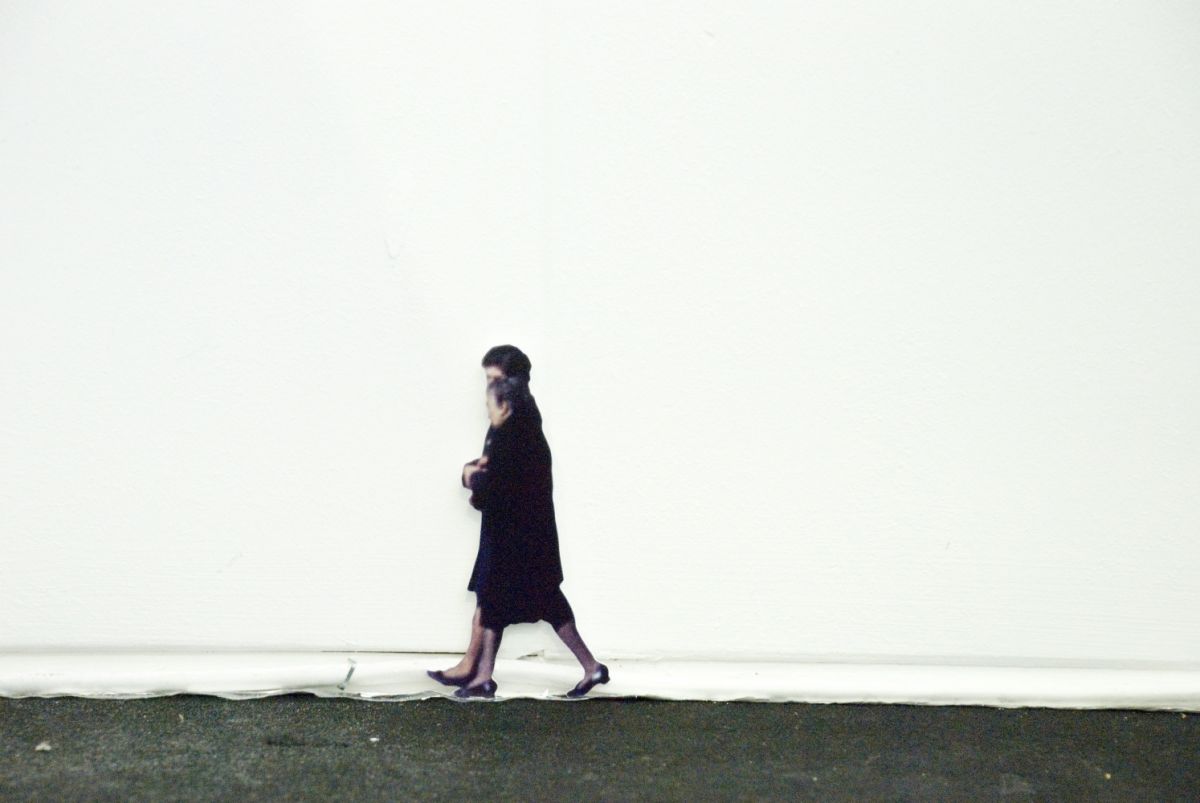
Doina Kraal (NL) Furkablick & Groen Blauw Landschap, 2010
Inkjet and c prints on forex and polystyrene,
Rai, Amsterdam
Kraal creates new worlds with her art. She does so in a poetic and mysterious way and delicately stimulates the viewer’s narrative imagination. The artist creates installations, for which she uses projections, photography and sculptures. These are illusionary landscapes, referring to landscape painting, without using the craft of painting. She uses found footage; photographs made by her grandparents and great-grandparents. After a careful selection, she extracts elements thereof and places them in another context. They appear as ‘extras’ seemingly walking out of the image. By recreating compositions, Doina Kraal creates worlds that never were, but could have been.
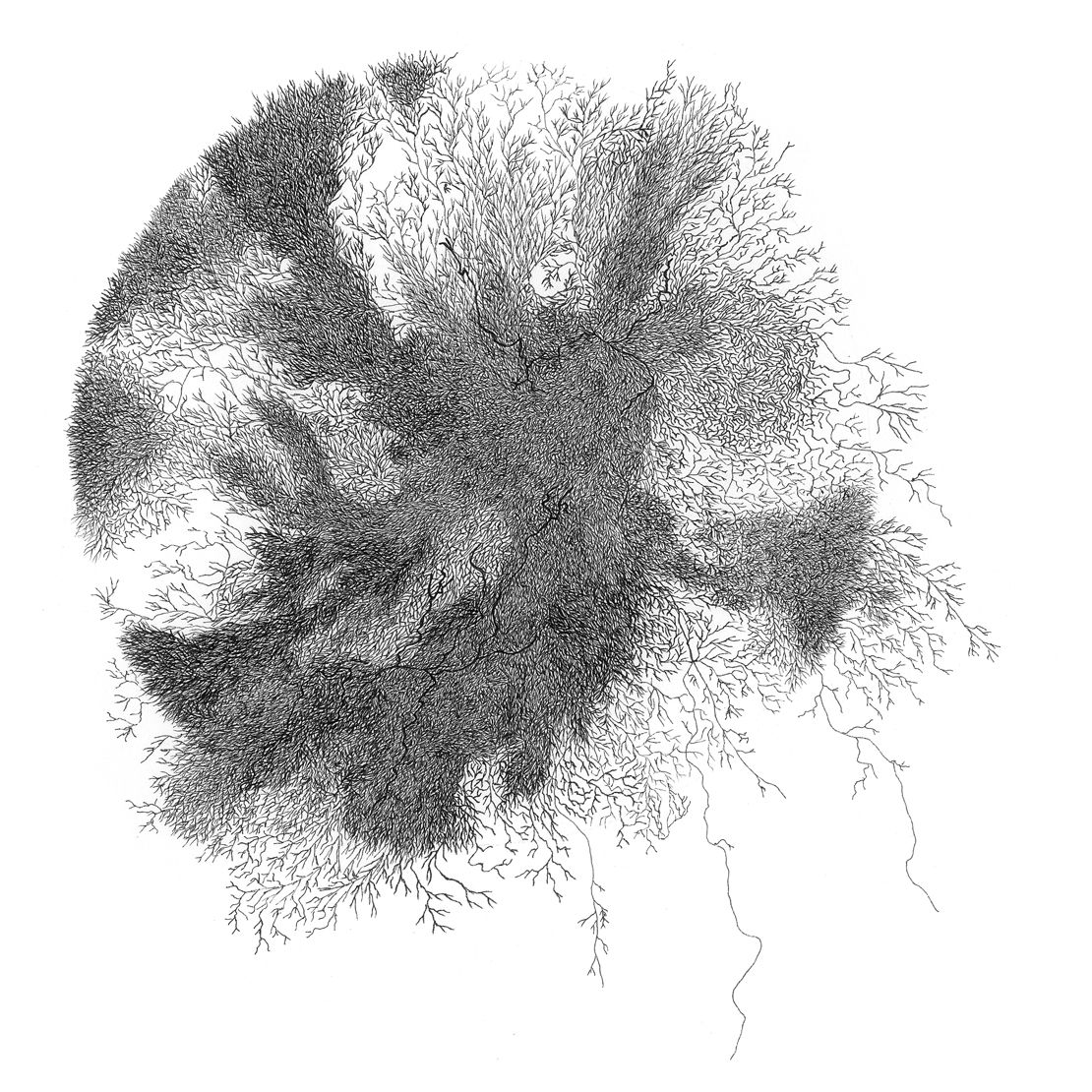
Greg Streak (SA) ...a rush of blood, 2008
Pen on paper,
Rai, Amsterdam
… a rush of blood has a corpuscular feel to it; almost like some part of the inside of the body under a microscope. Reminiscent of a network of blood filled veins or a tap root system out of control, … a rush of blood is both manic and delicate.
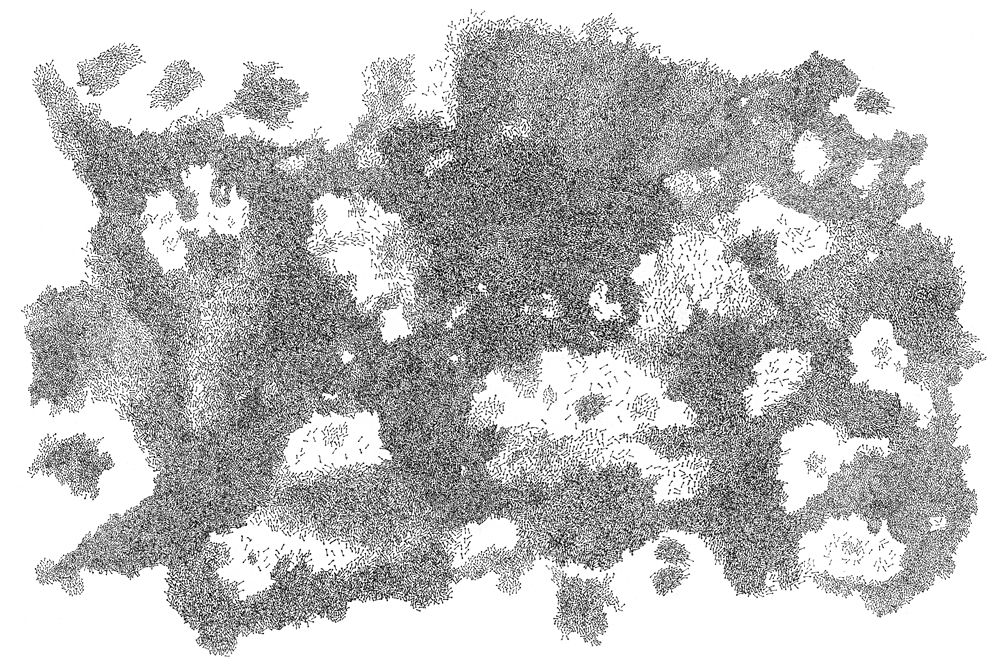
Greg Streak (SA) Accumulative Disintegration, 2008
Pen on paper,
Rai, Amsterdam
Accumulative Disintegration as a whole looks to be an aerial map of somewhere we don’t really know. Closer examination reveals individual marks that look like stitches: two small drawn dots connected by a line. But it’s also molecular in feel - a vibrating double helix?
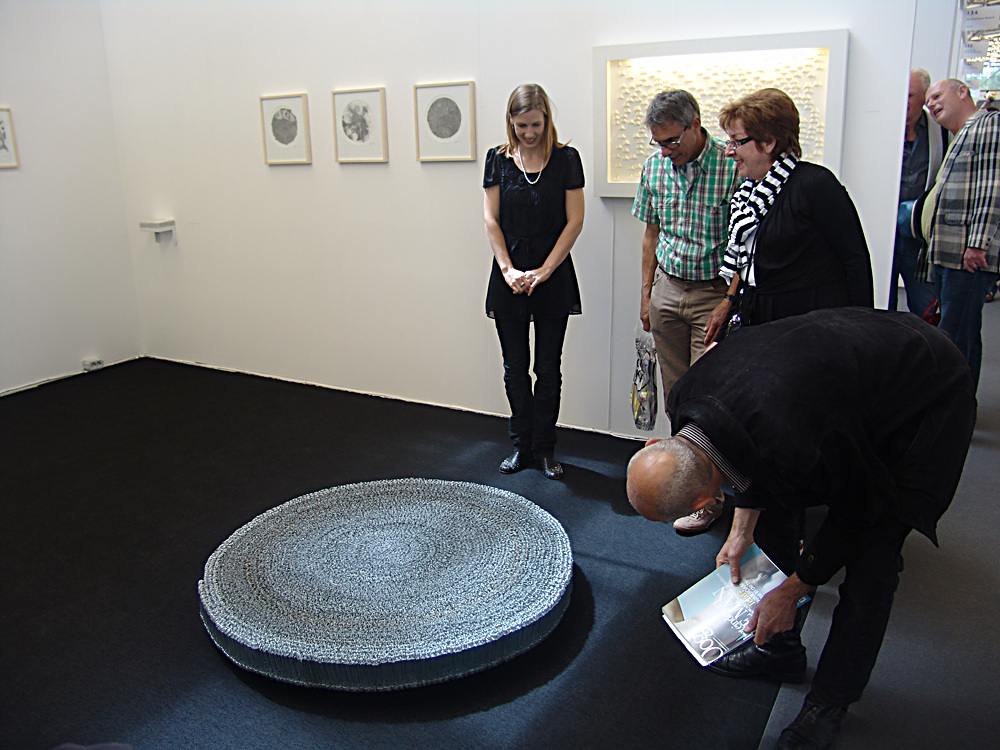
Greg Streak (SA) Exhibition view, 2010
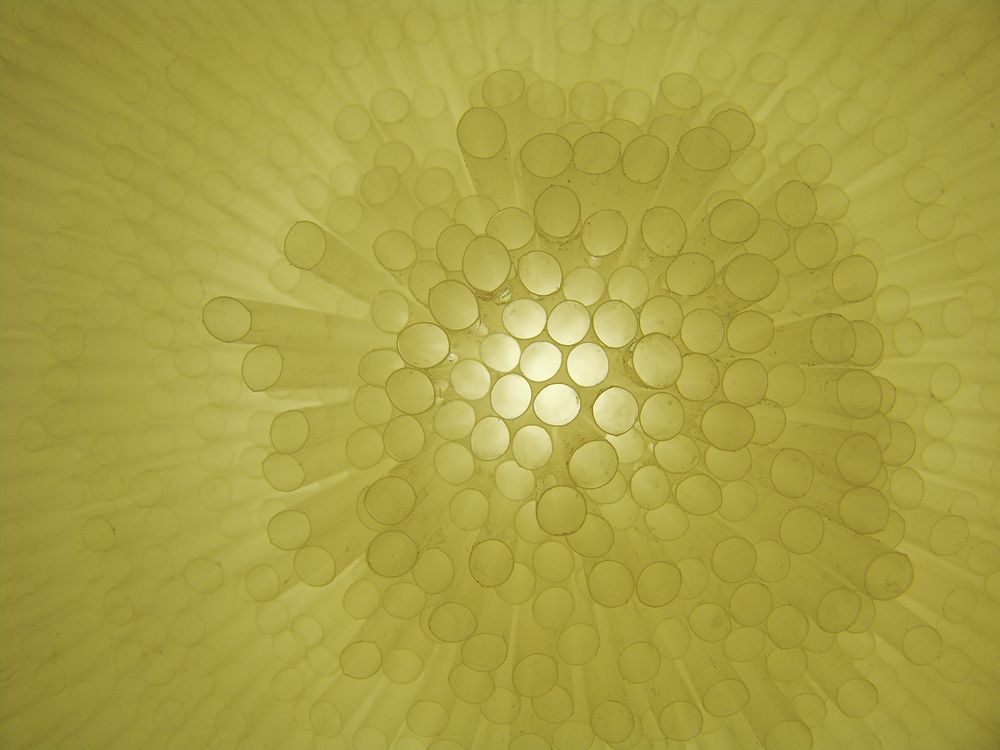
Greg Streak (SA) Glaucoma, 2010
Aluminium pot, straws, light,
Rai, Amsterdam
Accumulative Disintegration as a whole looks to be an aerial map of somewhere we don’t really know. Closer examination reveals individual marks that look like stitches: two small drawn dots connected by a line. But it’s also molecular in feel - a vibrating double helix?
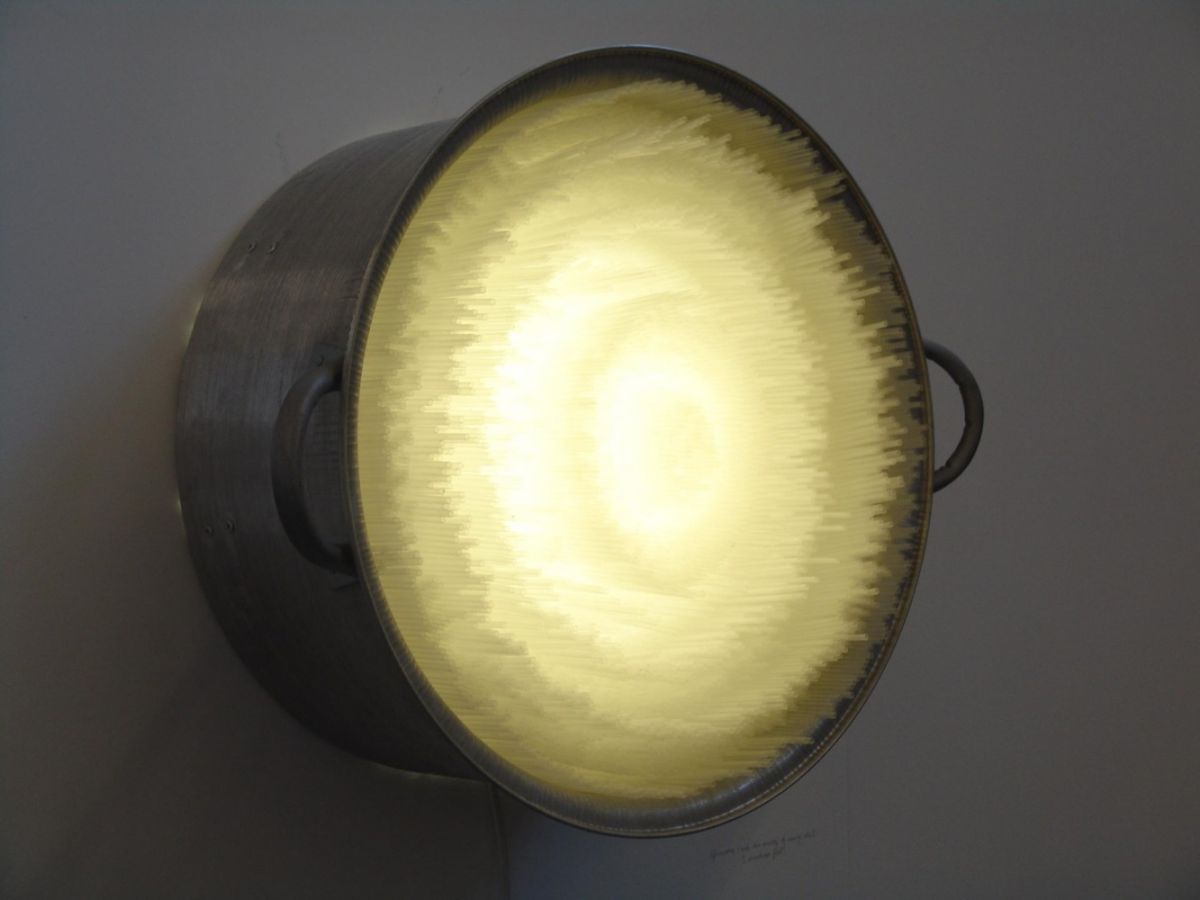
Greg Streak (SA) Glaucoma, 2010
Aluminium pot, straws, light,
Rai, Amsterdam
Accumulative Disintegration as a whole looks to be an aerial map of somewhere we don’t really know. Closer examination reveals individual marks that look like stitches: two small drawn dots connected by a line. But it’s also molecular in feel - a vibrating double helix?
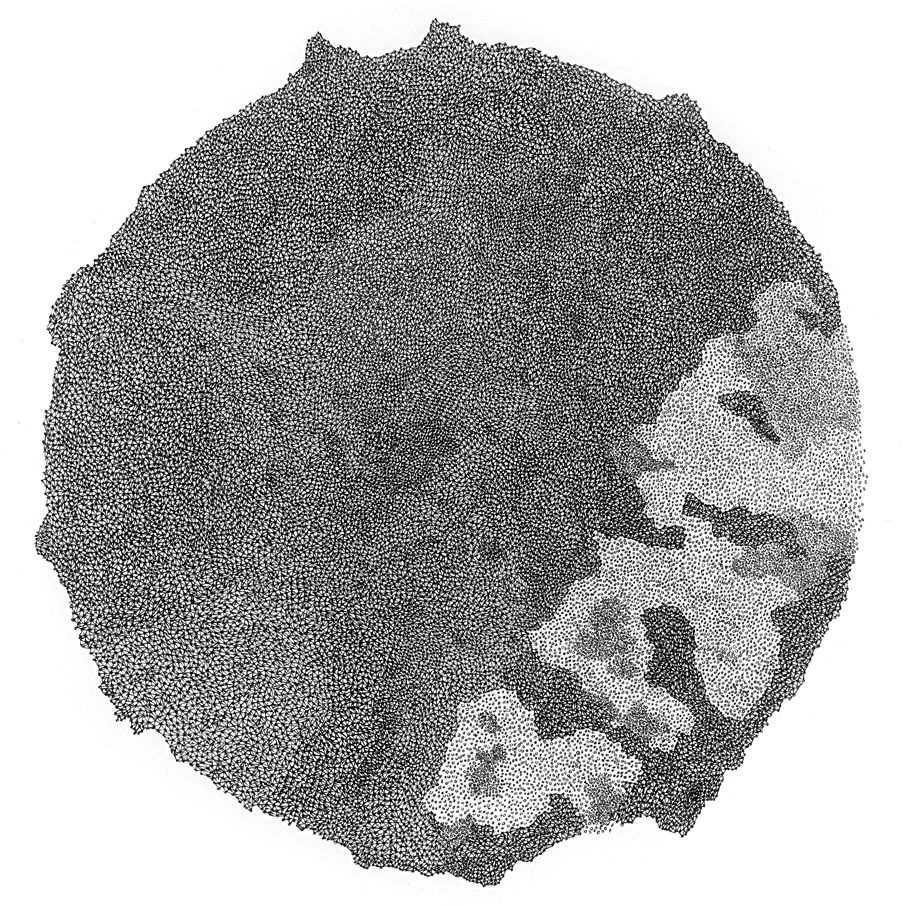
Greg Streak (SA) Someday I will find you, 2008
Archival ink drawing on cotton,
Rai, Amsterdam
Someday I will find you is an extreme accretion of connected circular dots – a matrix of interconnectedness. The surface intensity is difficult to describe. Even with fine scrutiny one feels that one is not seeing it all - that it is finer than the eye can actually hold. Small patches of miniscule hollow circles are left unconnected, which almost serves to amplify the concentration of the rest of the drawn surface.

Greg Streak (SA) The end always has a beginning, 2008
Pen on paper,
Rai, Amsterdam
The end always has a beginning has a more cosmological feel to it. A densely woven maze that flows over the entire drawn surface looks like an atomic detail of a meteorite shard captured from outer space. The title refers to the fact that where we end off always began sometime earlier and where we begin will at some point come to an end; a journey of life and death or in reflection back to the genesis of things.